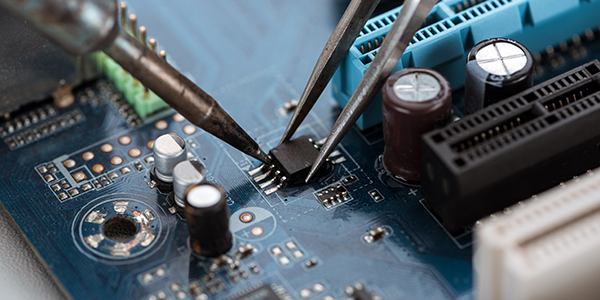Common Causes of PCB Copper Wire Falling Off
PCB raw material suppliers are often complained by customers that the copper wire is falling off (also commonly referred to as peel off copper). Once this happens, the PCB factories will say that this is a laminate problem, and then the customers will ask the production factories to bear heavy losses. The common reasons are as follows:

I. PCB Factory Process Factors:
1. The copper foil is over-etched. Electrolytic copper foils used in the market are usually single-sided galvanized (usually called ashing foil) and single-sided copper plating (usually called red foil). The common peeling off copper is generally galvanized copper foil above 70um, and the reddish foil and the ashed foil below 18um basically have no mass copper peeled off. Because zinc is inherently an active metal, when the copper wire on the PCB is immersed in the etching solution for a long time, it will inevitably lead to excessive side corrosion of the circuit, causing some thin circuit backing zinc layer to be completely reacted and separated from the base material, that is copper wire falls off.
Another situation is that there is no problem with the PCB etching parameters, but the washing and drying are not good after etching, causing the copper wire to be surrounded by the etching solution remaining on the PCB surface. Long-term untreated, will produce excessive corrosion on the side of the copper wire and peel off the copper.
2. The collision occurs locally during the PCB process, and the copper wire is separated from the substrate under the action of external mechanical force. This poor performance is poor positioning or orientation, the copper wire will be obviously twisted, or there will be scratches/impact marks in the same direction.
3. The PCB circuit design is unreasonable, and the design of a thin circuit with thick copper foil will also cause excessive etching of the circuit and peel off copper.
II. Reasons for the laminate process:
Under normal circumstances, as long as the high temperature part of the laminate is hot pressed for more than 30 minutes, the copper foil and the prepreg will be basically completely bonded, so pressing usually does not affect the adhesion of the copper foil and the aluminum foil and substrate in laminates. However, in the process of stacking and stacking laminates, if PP contamination or copper foil rough surface damage, it will also lead to insufficient bonding force between the copper foil and the substrate after lamination, resulting in positioning or sporadic copper wire falling off.
III. Reasons for laminate raw materials:
1. As mentioned above, ordinary electrolytic copper foils are all galvanized or copper-plated products. If the peak value of the wool foil is abnormal during production process, or the plating crystal branch is poor during galvanizing/copper plating, the peeling strength of the copper foil itself will be insufficient. When the bad foil pressed sheet material is made into PCB and plug-in in the electronics factory, the copper wire will fall off due to the impact of external force.
2. Poor adaptability of copper foil and resin: For some laminates with special properties, such as HTg base materials, due to different resin systems, the curing agent used is generally PN resin. The resin molecular chain structure is simple, and the degree of cross-linking is low during curing. It is necessary to use copper foil with a special peak to match it. When producing laminates, the use of copper foil does not match the resin system, resulting in insufficient peeling strength of the sheet metal-clad metal foil, and poor copper wire shedding when inserting.
SHENZHEN HOYOGO ELECTRONIC TECHNOLOGY CO., LTD. is an international, professional, reliable PCB manufacturer. We have 2 production bases with a monthly production capacity of 500,000 square meters. One-stop PCB product supply and solution. And HOYOGO have a management team with 25 years of average industry experience and reliable quality assurance.
评论
发表评论